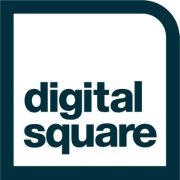Global Open Facility Registry
Global Open Facility Registry
The Global Open Facility Registry (GOFR) lets health data administrators analyze, de-duplicate, and curate lists of facilities. By reconciling data sets maintained by multiple sources, it helps health officials develop registries of all the unique health facilities in a country.
Data points such as the name and location of health facilities are essential to health information systems, reporting, and decision-making. However, up-to-date, accurate information on facilities may be difficult to find as different stakeholders with different information needs and naming conventions maintain separate lists. Additionally, governments often do not have access to a flexible, secure platform for facility management and information exchange. GOFR saves time, improves accuracy, and allows administrators to compare data sets, compile lists of facilities, and manage federations.
Approach
The Global Open Facility Registry (GOFR) lets health data administrators analyze, de-duplicate, and curate lists of facilities. By reconciling data sets maintained by multiple sources, it helps health officials develop registries of all the unique health facilities in a country. Examples of primary users include data managers at a central level Ministry of Health, managers of facility information, as well as the general public need to look up facility attributes.
Implementations
GOFR has been used to support the PEPFAR Data for Accountability, Transparency and Impact Monitoring (DATIM) project to match 80,000 facilities across numerous administrative levels in 21 countries, which include: Botswana, Burundi, Cameroon, Cote d’Ivoire, Democratic Republic of Congo, Ethiopia, Eswatini, Haiti, Kenya, Lesotho, Malawi, Mozambique, Namibia, Nigeria, South Africa, South Sudan, Tanzania, Uganda, Ukraine, Zambia, Zimbabwe. It has also been used by the Ministries of Health in Ethiopia, Guinea, Liberia, and Sierra Leone to reconcile facility lists.
Resources
- Website: www.openfacilityregistry.org
- Source Code: https://github.com/intrahealth/gofr
- Articles: https://www.intrahealth.org/vital/want-transform-populations-health
